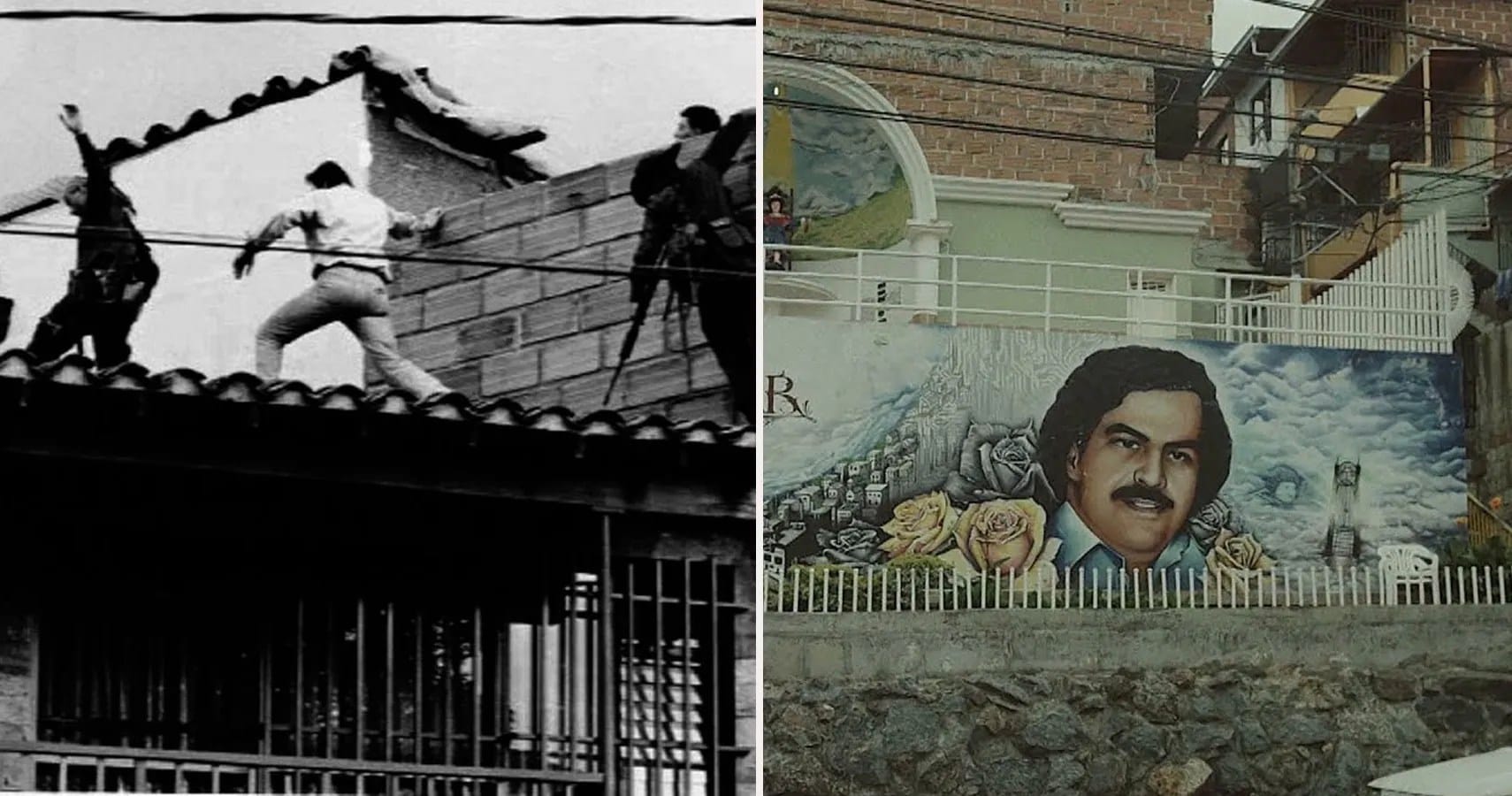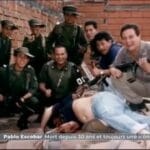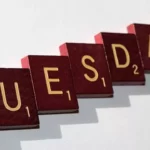The Controversial Rooftop Image: Unraveling the Mystery
You’ve likely seen it—the grainy picture plastered across newspapers and history books, showing the lifeless body of Pablo Escobar on a Medellin rooftop. This isn’t just another photo; this is the Pablo Escobar death picture, forever connected to the fall of one of the world’s most infamous drug lords.
The image, captured on December 2nd, 1993, represents the culmination of a relentless manhunt for the Medellin Cartel’s leader. Escobar, infamous for his role in countless acts of violence and large-scale drug trafficking, had become the world’s most wanted criminal. However, his death only ignited more questions and conflicting accounts that linger to this day.
Escobar’s Demise: Murder or Suicide?
The circumstances surrounding Escobar’s death remain shrouded in mystery. Did he die from a barrage of bullets fired by Colombian authorities, or did he choose to end his own life rather than face capture? The iconic rooftop image sits at the heart of this debate.
Some argue the location of the fatal wound suggests suicide, while others dismiss this theory, citing the overwhelming firepower directed at Escobar that day. The official investigation, although closing the chapter on Escobar’s reign, did little to quell the speculation. Whispers of cover-ups and inconsistencies in the official narrative only fueled the flames, leaving many convinced that the truth about Escobar’s demise remains elusive.
A Legacy Marred by Violence and Intrigue
The Pablo Escobar death picture is more than just a morbid relic; it’s a cultural artifact that forces us to confront the harsh realities of violence, justice, and the legacy of a man both reviled and, disturbingly, romanticized.
On the one hand, the image offers a chilling reminder of the devastation caused by Escobar’s criminal empire. It’s hard to glamorize the drug trade when faced with such a raw depiction of its consequences. Yet, the very act of capturing and sharing this image raises ethical concerns. Are we engaging in responsible journalism by documenting a historical turning point? Or are we inadvertently contributing to the morbid fascination surrounding Escobar, transforming his death into a spectacle that overshadows the countless lives lost during his reign?
Regardless of your stance, the picture’s impact is undeniable. It’s a conversation starter, a grim history lesson, and a stark reminder that reality is often far more intricate and unsettling than any fictional narrative.
An Enduring Enigma
Even decades later, the Pablo Escobar death picture sparks debate and fuels ongoing research. As new evidence surfaces and theories are re-examined, the quest to fully understand that fateful December day continues. This haunting image is forever woven into the fabric of history, ensuring the story of Pablo Escobar, in all its complexity and controversy, will be told and retold for generations to come.
Did Pablo Escobar Get a Funeral?
After his dramatic end in 1993, the question arose: what happened to Pablo Escobar’s remains? Did this notorious figure, responsible for unimaginable violence and corruption, receive a proper farewell? The answer might surprise you.
A Farewell Marred by Contradictions
On December 3rd, 1993, just one day after his death, a massive public funeral was held for Pablo Escobar in his hometown of Medellín, Colombia. Over 25,000 people attended, a testament to the complex and often contradictory feelings surrounding the drug lord.
The sheer number of attendees highlights the duality of Escobar’s legacy. To some, he was a ruthless criminal, the embodiment of terror. Yet, to others, particularly within Medellín, he was a folk hero, a local boy who rose to power and, through often illegal means, brought wealth to his community.
The funeral itself was a bizarre mix of mourning and celebration. Some grieved his loss genuinely, while others seemed caught up in the spectacle, perhaps even relieved that his reign of fear had ended.
A Public Burial for a Fallen Kingpin
The fact that Escobar was laid to rest in Medellín, despite being hunted by authorities and enemies alike, speaks volumes about his enduring influence, even in death. The public nature of his funeral, a stark symbol of his complicated place in Colombian history, captivated the world’s attention.
News of the event spread quickly, becoming a major media spectacle as the world watched Colombia grapple with the loss of this polarizing figure. The funeral provided a raw and often unsettling glimpse into Escobar’s profound and lasting impact on Colombian society—an impact that clearly transcended his death.
Are you eager to stay informed about the latest developments in technology? Look no further! We’ve got you covered with our in-depth report on the phoenix coldon update 2024. Don’t miss out on this exclusive coverage!
Unveil the photos of kurt cobain suicide that have captivated and haunted the world. Dive into the depths of this tragic event and uncover the hidden truths.
- SYBAU See You Baby Meaning: Gen Z Slang Evolves - July 1, 2025
- Unlock Your Inner Youth: Lifestyle Secrets for a Vibrant Life - July 1, 2025
- Decode SYBAU Meaning: Gen Z Slang Explained - July 1, 2025







2 thoughts on “Pablo Escobar’s Death: The Story Behind the Infamous Rooftop Picture”
Comments are closed.